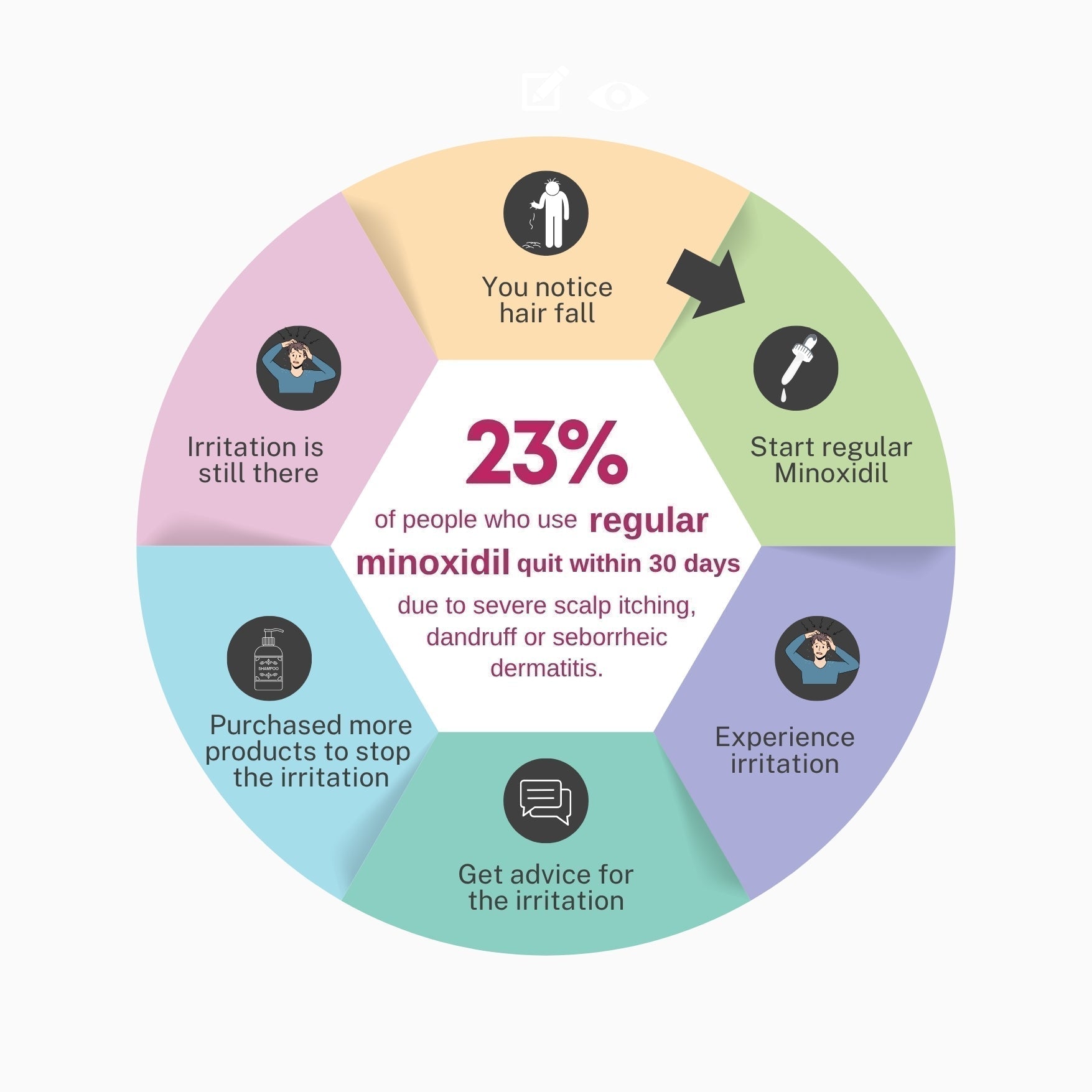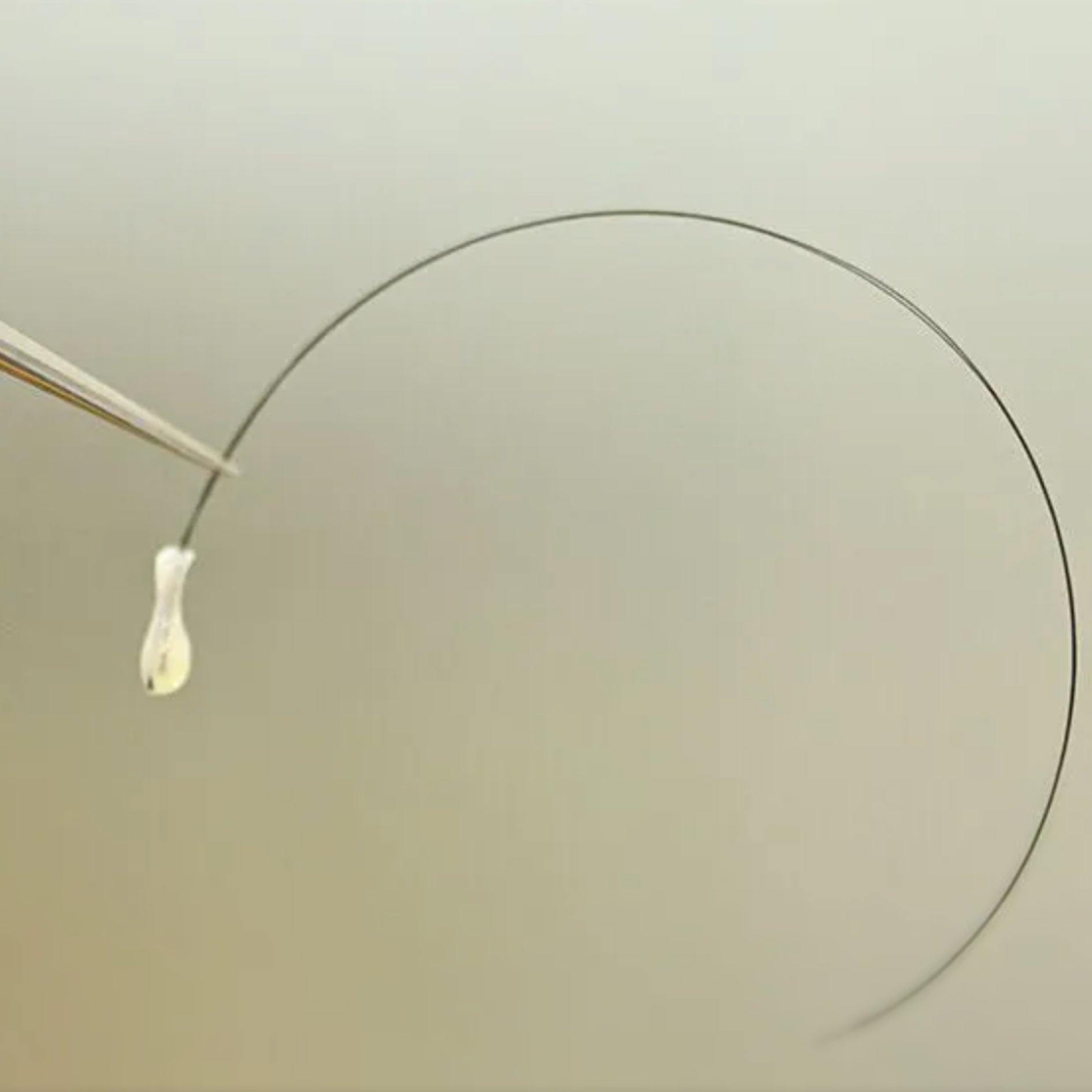menopausal hair loss treatment
When we think of hair loss, we often think of male hair loss, but the reality is that women are increasingly experiencing hair loss too.
During menopause, hormonal fluctuations can affect hair follicles, leading to hair thinning, reduced volume, and changes in hair texture. These changes are primarily due to a decrease in oestrogen levels and higher-than-normal testosterone levels. Therefore, menopausal hair loss is pretty much the same as female pattern hair loss (also known as androgenic alopecia) but occurs later in life.
Not all women experience significant hair changes during menopause. Genetic factors, stress and diet influence the extent of change during menopause.
What is menopause?
Menopause is defined as “the permanent cessation of menses for 12 months resulting from oestrogen deficiency."
According to a recent article in the Journal of Biomedicine, the pace and duration of the menopausal transition are concurrent processes influenced by both chronological and ovarian aging.
Said differently, how quickly we reach menopause depends on our chronological and ovarian ages. Since we cannot control our chronological age, we can control ovarian aging. Variables that can influence ovarian ageing, including nutrition, activity level, smoking status, body mass index (BMI), ethnicity, cultural beliefs, and concomitant medical conditions, affect the age of menopause onset.
If you are approaching 40, do not start preparing for menopause. It is time to begin regular yoga classes and healthy meal preps (and don't forget strength training to safeguard against osteoporosis and fewer prescriptions to fill).
Why do women lose hair during menopause?
Hair loss during menopause often manifests as diffuse thinning or widening of the midline (similar to the presentation of female pattern hair loss). Low oestrogen shortens the anagen (growth) phase, and follicles become more sensitive to androgens and shrink over time. As a result of follicle miniturising (shrinking), the hair becomes weak and falls out easily.

Nutrients for menopausal hair loss
- Beta-carotene
- Omega-3 fatty acids
- Biotin
- Zinc
- Iron
- Vitamin D
Treatments for menopausal hair loss
We always want to to get to the root cause so correcting the estrogen-androgen ratio is key, whether with topical treatments or oral treatments such as spironolactone.
Other adjunct (add-on) therapies that can help include:
- Scalp massages to improve blood flow
- Topical solutions with peptides and rosemary (data is limited)
- Micro-needling and red light therapy
- Low dose oral minoxidil
- Topical minoxidil
In recent years, topical finasteride has attracted significant interest for the management of menopausal hair loss. However, the data are preliminary, and the optimal finasteride concentration has not been standardised for women.
Topical minoxidil remains a popular choice for treating hair loss in women, as it improves blood flow and promotes hair growth. Combining minoxidil and re-establishing the oestrogen-androgen ratio is a consideration for pharmacists.
References:
- Rinaldi, F et al.The Menopausal Transition: Is the Hair Follicle “Going through Menopause”? Journal of Biomedicines.(2023) Nov 14;11(11):3041. doi: 10.3390/biomedicines11113041
- Treating female hair loss. (2024) Harvard Health. https://www.health.harvard.edu/staying-healthy/treating-female-pattern-hair-loss
- Kinosita-Ise, M et al. Recent Advances in Understanding of the Etiopathogenesis, Diagnosis, and Management of Hair Loss Diseases. J. Clin. Med. 2023, 12(9), 3259; https://doi.org/10.3390/jcm12093259



